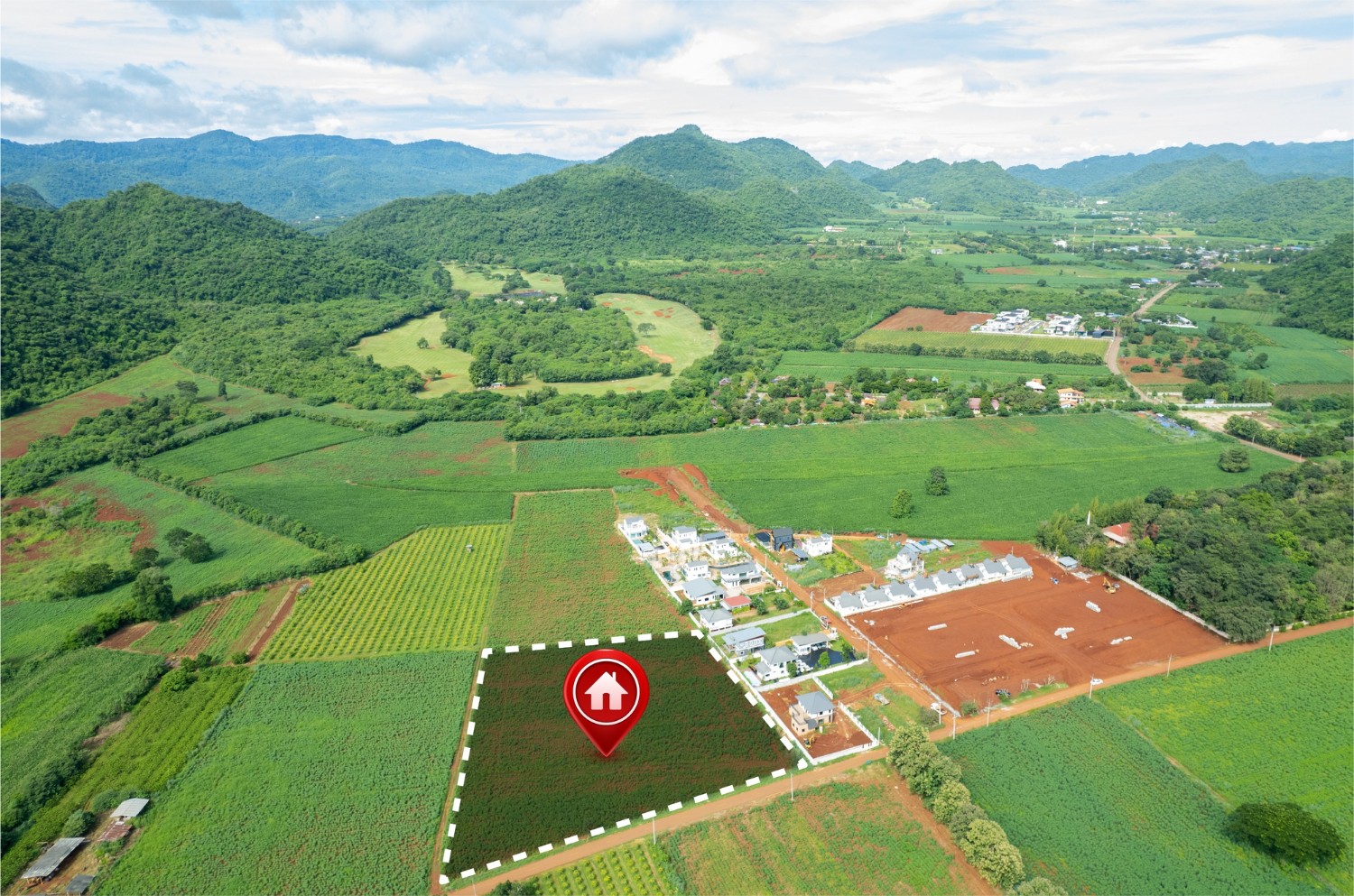Selling land can be a complex endeavor, especially when deciding between developed and undeveloped properties. Each type of land comes with its own set of unique challenges and opportunities. By understanding the differences between developed and undeveloped land, we can adopt the most effective selling strategies to attract the right buyers and maximize returns.
Developed land typically has valuable infrastructure like roads, utilities, and sometimes buildings already in place. These elements can significantly influence a buyer’s decision, making marketing techniques more targeted. Highlighting existing amenities and leveraging zoning advantages can make a substantial difference in the sale process.
Undeveloped land, on the other hand, offers a blank canvas with immense potential for future development. Convincing buyers of this potential requires a different approach, such as emphasizing possible uses and addressing common concerns. Tailoring marketing efforts for various buyer types is crucial in showcasing the full possibilities of the land.
Whether dealing with developed or undeveloped land, there are key considerations to keep in mind. Assessing market demand, understanding legal requirements, and adopting the right pricing strategies are essential steps. By employing these tactics, we can ensure a smooth and profitable land sale.
Definition and Characteristics of Developed Land
Developed land refers to parcels that already have infrastructure in place, such as roads, utilities like water and electricity, and often existing buildings or structures. These improvements make the land ready for immediate use, whether for residential, commercial, or industrial purposes. Developed land usually exists in urban or suburban areas where access to services and amenities is convenient.
One key characteristic of developed land is its higher initial cost compared to undeveloped land. However, the investment often pays off due to the ease of quickly putting the land to use. Buyers typically find developed land more attractive because the groundwork is already done, reducing both time and money spent on development.
Definition and Characteristics of Undeveloped Land
Undeveloped land, sometimes called raw or vacant land, lacks the improvements found in developed parcels. There are no existing buildings or utility services, making it a blank slate for future development. This type of land is commonly located in rural areas, though undeveloped parcels can also be found in growing urban fringe zones.
Undeveloped land can be less expensive upfront, but future development requires significant investment in infrastructure. Despite these initial drawbacks, the potential for customization and future appreciation can make undeveloped land a worthwhile investment. Buyers attracted to undeveloped land often have specific visions for its use, from agriculture to constructing custom homes or commercial establishments.
Pros and Cons of Each Type
Pros of Developed Land:
- Immediate usability
- Existing infrastructure and utilities
- Generally easier to finance
Cons of Developed Land:
- Higher initial cost
- Limited customization options due to existing structures
- Potential for higher property taxes
Pros of Undeveloped Land:
- Lower initial cost
- High customization potential
- Possible future appreciation in growing areas
Cons of Undeveloped Land:
- High development and infrastructure costs
- Potential zoning and regulatory hurdles
- Limited immediate usability
Effective Selling Strategies for Developed Land
Highlighting Infrastructural Improvements
When selling developed land, it’s crucial to underscore the value of existing infrastructures, such as paved roads, utility connections, and any structures that may be present. Highlighting these features can make the property much more attractive to buyers who are looking for ready-to-use spaces. Providing detailed information about the condition and capacity of these infrastructures can help buyers understand the benefits and reduce their due diligence time.
Leverage high-quality photos and videos that showcase the property’s developed aspects, emphasizing the convenience and savings on initial developments. Emphasizing these infrastructural advantages in marketing materials can set your developed land apart from less equipped alternatives.
Leveraging Zoning Advantages
Understanding and marketing the zoning advantages of developed land can significantly boost its appeal. Zoning laws determine the permissible uses of land and can range from residential and commercial to industrial purposes. Developed land often has favorable zoning, which can be a significant selling point.
Highlight how the current zoning aligns with potential buyers’ needs. For instance, if the land is zoned for mixed-use development, market it to both residential developers and commercial businesses. Providing information on any approved permits or future zoning changes can also reassure buyers of the land’s long-term viability.
Marketing to Specific Buyer Groups
Effective marketing involves targeting the right buyer groups for developed land. Residential developers, commercial businesses, and investors looking for rental properties are primary audiences. Tailor your marketing message to each group, emphasizing aspects that appeal to their specific needs.
For residential developers, focus on features like proximity to schools, neighborhoods, and public transportation. For commercial buyers, highlight the potential for business growth, customer access, and traffic flow. Investors might be interested in the current rental income and future property appreciation. Using targeted advertising on relevant platforms can significantly increase visibility to these specific groups.
Selling Strategies for Undeveloped Land
Emphasizing Potential and Future Developments
When selling undeveloped land, it’s important to highlight its potential. Emphasize how the land can be transformed to suit various purposes, such as residential, commercial, or agricultural projects. Provide examples of similar undeveloped land that has been successfully developed to give buyers a vision of what the future could hold.
Create marketing materials that showcase possible development plans, such as layout designs, conceptual drawings, or even 3D models. These visuals can help buyers imagine the land’s future possibilities. Discuss any nearby developments or planned infrastructure projects that could increase the land’s value over time.
Tailoring Marketing Approaches for Different Buyer Types
Different buyers have diverse needs, so it’s crucial to tailor marketing approaches accordingly. For developers, focus on the land’s suitability for construction and its proximity to essential services like schools and shopping centers. Investors might be interested in the long-term appreciation potential and any tax incentives or grants available for development.
Farmers and agricultural businesses may look for fertile soil, water access, and favorable climate conditions. For each buyer type, emphasize the aspects of the land that would most appeal to them in targeted marketing campaigns. Use online platforms, social media, and real estate listings to reach these specific audiences effectively.
Addressing Common Buyer Concerns
Buyers often have concerns when purchasing undeveloped land, such as zoning restrictions, land access, and the cost of developing infrastructure. Address these issues upfront by providing detailed information and solutions. If possible, offer insights into how the land has been zoned and any potential for rezoning.
Share information about the property’s access routes and any necessary improvements. Highlight any existing assessments, surveys, or pre-approvals that could streamline development. By being transparent and providing comprehensive information, we can help alleviate buyer concerns and facilitate faster sales.
Key Considerations When Selling Land
Assessing Market Demand for Each Type of Land
Understanding market demand is crucial for setting the right price and attracting buyers. Research current trends and data to determine the demand for developed versus undeveloped land in the area. Use this information to create a competitive price point and marketing strategy.
Stay informed about upcoming developments, economic changes, and shifts in buyer preferences. Keeping an eye on local real estate reports and talking to industry experts can provide valuable insights. By aligning our selling strategies with market demand, we can increase the chances of a successful transaction.
Legal and Regulatory Requirements
Navigating legal and regulatory requirements is essential when selling any type of land. Ensure that all zoning laws, permits, and property taxes are in order before listing the property. Provide buyers with a clear understanding of any legal obligations they will inherit with the land.
Stay updated on any changes in local regulations that could affect the land’s use. Consulting with legal experts can help in addressing complex issues and avoiding potential pitfalls. Transparency in legal matters builds trust and can expedite the selling process.
Pricing Strategies and Financial Considerations
Setting the right price for land is a critical step in the selling process. Start with a professional appraisal to determine the land’s value based on recent sales of similar properties. Consider factors such as location, size, and development potential.
For developed land, price adjustments might be necessary to account for existing infrastructure and amenities. For undeveloped land, emphasize its future potential while keeping the initial lower cost in mind. Be open to negotiating with buyers but know the minimum price you’re willing to accept. Offering financing options or connecting buyers with lenders can also facilitate a quicker sale.
Conclusion
Selling developed and undeveloped land requires distinct strategies to maximize their unique advantages and address potential challenges. Developed land benefits from highlighting existing infrastructure and zoning advantages, while undeveloped land requires emphasizing its potential and future development opportunities. By tailoring marketing approaches and addressing buyer concerns upfront, we can attract the right audience for each type of property.
Understanding market demand, navigating legal requirements, and setting the right price are critical steps in ensuring a successful land sale. By staying informed and proactive, we can make the selling process smoother and more efficient.
Looking to sell your land without the hassle? Contact 7Land Corp today. Our experienced team is here to help you navigate the complexities of land selling and achieve the best results quickly and efficiently. Reach out to us now to get started!




